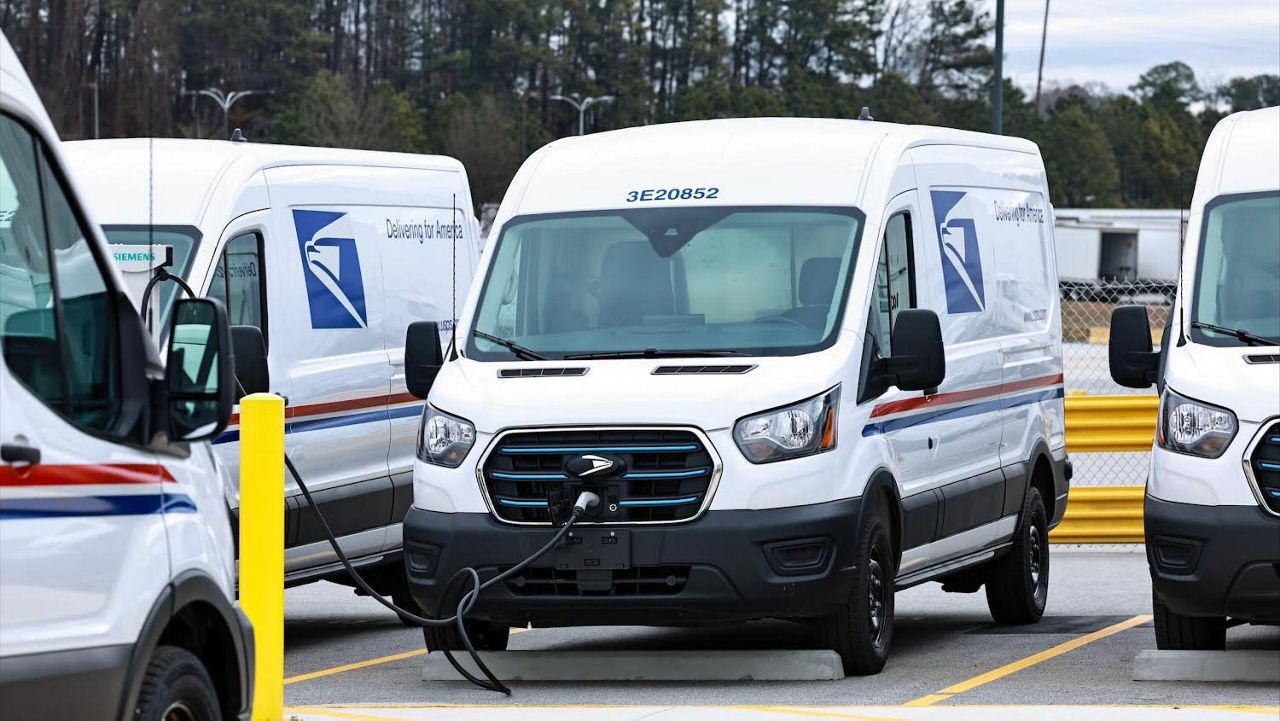The United States Postal Service showed off its first batch of electric delivery vehicles and EV chargers at a sorting and delivery center in Atlanta on Monday.
The vehicles and chargers are part of a ten-year modernization plan that includes electrifying about a quarter of USPS vehicles.
“The improvements we need to achieve in sustainability are an integral outgrowth of the broader modernization efforts we have undertaken,” Postmaster General Louis DeJoy said in a statement. “As we transform our operating processes and invest in new automation, new technologies and upgraded facilities and vehicles, we will generate significant efficiencies that reduce our costs, slash our carbon footprint and minimize waste.”
The EV chargers are part of the USPS plan to reduce its vehicle emissions 40% by 2030 compared with 2021 levels. The postal service also intends to reduce emissions by shifting from more polluting air transport to trucks and to accelerate the agency’s EV adoption by deploying more than 66,000 EVs by 2028 as part of its Delivering for America plan.
The USPS operates more than 246,000 vehicles that travel more than 1 billion miles annually, according to its website.
On Monday, the USPS showed new domestically made, commercial off-the-shelf delivery vehicles that it says will account for 21,000 of the 66,000 EVs the agency plans to put into service. Ford is providing 9,250 of its E-Transit vans for the first wave of the transition. The first electric delivery trucks will be used in Georgia before rolling out to other locations later this year.
The EVs will include air conditioning and safety upgrades, following complaints from many drivers who said the Grumman LLV trucks USPS has used for decades were uncomfortably hot in the summer, overly cold in the winter and lacked commonplace safety features such as airbags.
The USPS said the Ford E-Transits have almost three times the cargo capacity of the Grumman LLVs and will help the agency improve efficiency by eliminating the need for carriers to make second trips to deliver packages.
In late 2022, USPS said it would speed up its transition to zero-emissions deliveries, spending $9.6 billion to covert 66,000 of its delivery vans to electrics. The plan called for electrifying 75% of the USPS next generation delivery vehicles and beginning to acquire 100% electric versions of its trucks starting in 2026.
Funded, in part, with $3 billion from the Inflation Reduction Act Congress passed in 2022, the strategy also includes the installation of EV chargers at hundreds of Postal Service facilities. Of the IRA funds, $1.7 is slated for building charging infrastructure.
The charging stations at the Atlanta sorting and delivery center was made by Siemens — one of three companies that will provide the agency’s first 14,000 EV chargers. Rexel/ChargePoint and Blink will also provide EV chargers.
The Postal Service plans to convert about 400 of its sorting and delivery centers into EV deployment hubs. The agency has so far opened 29 of them.



